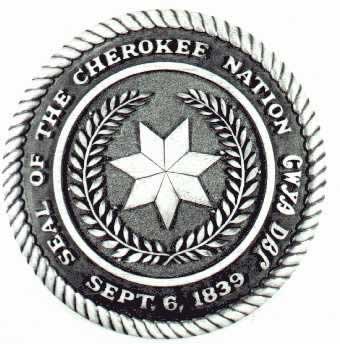|
Dec.
13, 1801:
|
In
treaty negotiations which begin today at Fort Adams, Missisissippi,
between the CHOCTAW and the United States, the U.S. agrees
to provide training in the spinning of cotton and spinning
wheels. The conference will last through December 18th.
|
|
|
Dec.
14, 1703:
|
Today,
a small militia from the Carolinas, of 50 men led by Colonel
James Moore, and almost 1,000 CREEK Indians, attack the APALACHEE
Indian village of Ayubale, near modern day Tallahassee. After
a 9 hour battle the Carolina-CREEK allies are victorious.
The APALACHEE were allied with the Spanish. Upon hearing of
the battle, Spanish soldiers would march from a nearby fort
to counterattack on January 15, 1704. Moore's force would
defeat the Spanish, as well. According to Moore's records,
over 200 of the pro-Spanish Indians would die in the fighting.
|
|
|
Dec.
15, 1855:
|
Governor Stevens gets NEZ PERCE honor guard.
|
|
|

The
central Mississippi Valley is the most earthquake-prone region
of the United States east of the Rocky Mountains. Crosses
show the locations of the many earthquakes recorded in the
New Madrid seismic zone since 1974.
|
|
Dec.
16, 1811:
|
The New Madrid earthquake takes place today on the Mississippi
River. Many tribes will tell tales of this event for generations.
|
|
|
Dec.
17, 1890:
|
Sitting
Bull and the police killed during his arrest are buried with
honor. Today, members of the HUNKPAPA SIOUX arrive at Big
Foot's camp of MINNECONJOU SIOUX seeking refuge. However,
today will also see the issuing of an arrest warrant for Big
Foot, himself, for his part as a "trouble maker"
in the ghost dance religion.
|
|
|
Dec.
18, 1812:
|
After successfully attacking, and burning, 2 peaceful MIAMI
and DELAWARE Indian villages, and fighting to a draw in another
village, yesterday. Col. John Campbell, and almost 600 American
volunteers have camped for the night near on of the destroyed
villages on the Mississinewa River. They are there to prevent
the hitherto peaceful tribes from joining Tecumseh's Rebellion,
and attacking William Henry Harrison's rear flank as he engages
Detroit. The MIAMIs consider yesterday's attacks on villages
who had pledged not to support Tecumseh's "Rebellion"
as nothing more than an unprovoked massacre. Today the MIAMI's
mount a retaliatory raid against Campbell's camp before dawn.
They will kill 10 soldiers, and wound 48 more, before they
withdraw. Campbell will give up his expedition along the river
after this attack.
|
|
|

The
oldest building in North America's Great Lakes area.
The oldest building of the Fort and, indeed, in the
eastern interior of North America, the "Castle"
was originally the sole structure of Fort Niagara. To
calm the suspicions of the hostile Iroquois, the French
designed it to resemble a large trading house. The building
was, in actuality, a strong citadel capable of resisting
Indian attack. The castle has been restored to its 1727
appearance, at which time most garrison facilities were
located within its walls. Following expansion of the
Fort in 1755-57, the Castle was used as officers' quarters.
Army families resided here as late as World War I.
|
|
|
Dec.
19, 1813:
|
Today, a combined force of Indians warriors and British
soldiers will attack, and capture Fort Niagara, in New York.
The American defenders will sustain 60 fatalities and 350
will be captured. Later, the victorious Indians would also
capture nearby Lewiston.
|
|
|
Dec.
20, 1812:
|
Sacajawea
dies at Fort Manuel, South Dakota, according to some sources.
|
|
|
Dec.
21, 1804:
|
The
2 treaties the CHEROKEEs signed with Return Meigs are sent
to the Senate today for consideration. The CHEROKEEs will
give up over four million acres for almost $20,000.
|
|
|

Seal
of the Cherokee Nation
|
|
Dec.
22, 1830:
|
The
State of Georgia prohibits whites from being on CHEROKEE land
without a permit.
|
|
|
Dec.
23, 1804:
|
MANDANs
offer Lewis and Clark food as trade.
|
|
|
Dec.
24, 1776:
|
Washington
asks the PASSAMAQUODDY for help in the Revolutionary War.
|
|
|
Dec.
25, 1780:
|
John
Sevier, and additional troops from Virginia, burn the CHEROKEE
town of Chota, Tennessee, and several nearby villages.
|
|
|
Dec.
26, 1734:
|
Rev.Richard
Treat of Glastonbury, Connecticut, will start teaching English,
and religion, today to the WANGUNKs, close to Middletown.
|
|
|
|
|




